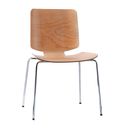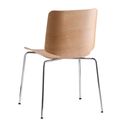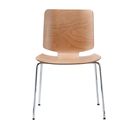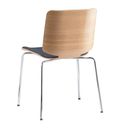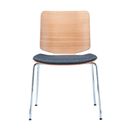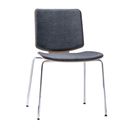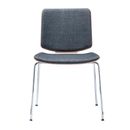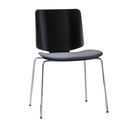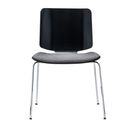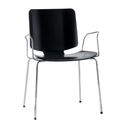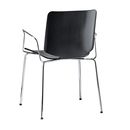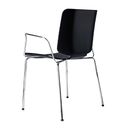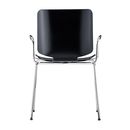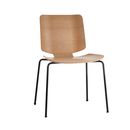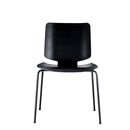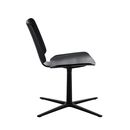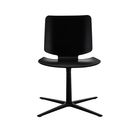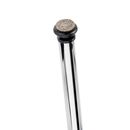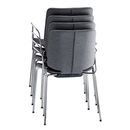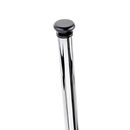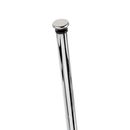Zitmeubelen
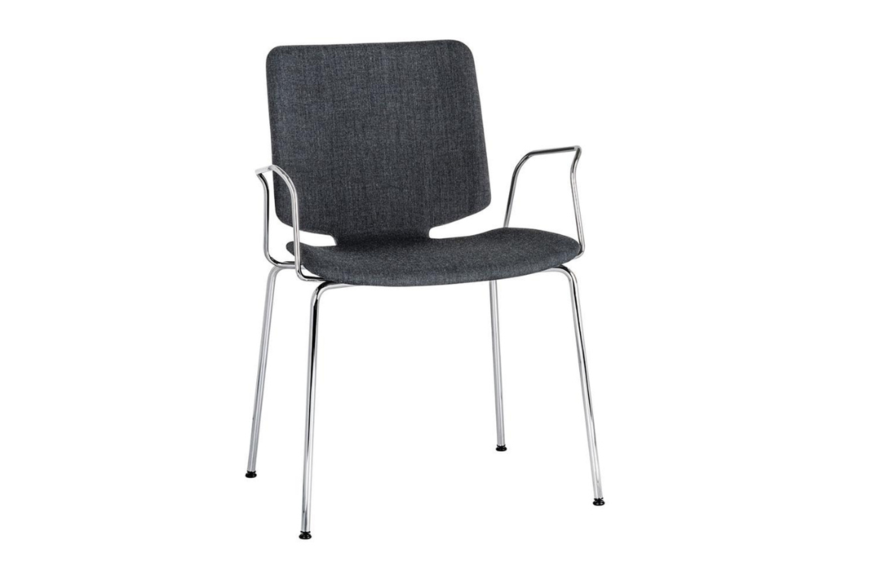
ALVO
Klassieke houtschaalvormen met uitgefreesde randen hebben altijd gezorgd voor uitstekend zitgenot. ALVO interpreteert de archetypes van zitcomfort dankzij een nieuwe en royaal gevormde houtenschelp. Het gesofi stikeerde metalen onderstel herinnert aan de Scandinavische traditie om een design klassieker te worden.
Downloads
- ALVO Productinformation
(483 KB) - 1440.dwg
(4 MB) - 1440-001.dwg
(4 MB) - 1440-003.dwg
(4 MB) - 1441.dwg
(2 MB) - 1445.dwg
(4 MB) - 1445-001.dwg
(5 MB) - 1445-003.dwg
(5 MB) - 1446.dwg
(3 MB) - 1450.dwg
(2 MB) - 1450-001.dwg
(4 MB) - 1450-003.dwg
(4 MB) - 1451.dwg
(4 MB)

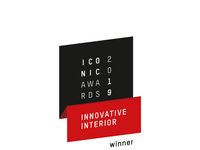
Frame | 1440 - 1446
Four-legged frame, made of precision round steel tube ZSTE 420, Ø 16 x 2 mm. Armrests made of steel wire Ø 10 mm, firmly welded on the frame.
Frame | 1450 - 1451
Die-cast aluminium frame. 4-arm base with conical arms. Swivel column Ø 50 mm at the bottom and Ø 40 mm at the top.
Frame surfaces | 1440 - 1446
Standard version of the frame: chrome-plated, optionally powder-coated according to the BRUNE ® collection.
Frame surfaces | 1450-1451
Polished aluminium frame as standard, optionally powder-coated with structured lacquer in matt black.
Seat shell
Ergonomically shaped solid shell made from beech plywood, 9 mm thick, in transition from seat to back about 12 mm thick, multi-glued. By means of threaded insert invisibly screwed to the frame.
Wooden surfaces
Wooden seat shell cross-veneered in beech as standard, natural lacquer (optionally matt), with low-solvent water-based lacquer, optionally stained according to BRUNE® collection. Optional: seat shell with surface veneer in oak, cross-veneered.
Upholstery
Seats or seats and back supports are optionally available with partial upholstery or a fully upholstered seat shell, fabric cover according to the BRUNE® collection.
| Seat cushion foam: | SG/CH 60/70 | ca. 15 mm thick | ||
| Back cushion foam: | SG/CH 60/70 | ca. 15 mm thick | ||
| Back cushion foam on back: | SG/CH 35/50 | ca. 5 mm thick | ||
| Seat cushion foam padding: | SG/CH 60/70 | ca. 15 mm thick | ||
| Back cushion foam padding: | SG/CH 60/70 | ca. 10 mm thick |
SG = specific gravity CH= compression hardness
Stacking protection
The stacking protection made of formfleece is firmly bolted to the frame.
Gliders | 1440-1446
| Standard version: | Flexible gliders with plastic insert | |
| Optionally: | Flexible gliders with felt insert | |
| Flexible metal gliders |
Gliders | 1450-1451
| Standard version: | Without gliders | |
| Optionally: | Plastic gliders | |
| Felt gliders |
Dimensions | 1440 without armrests
| Width: | B | 57,0 cm | ||
| Depth: | T | 54,5 cm | ||
| Total height: | H | 83,0 cm | ||
| Seat height: | SH | 45,0 cm | ||
| Weight: | 5,5 kg | |||
| 6,0 kg (seat padding) 6,5 kg (front side padding) 6,0 kg (fully upholstered) |
Dimensions | 1445 with armrests
| Width: | B | 59,0 cm | ||
| Depth: | T | 54,5 cm | ||
| Armrest height: | AH | 65,5 cm | ||
| Total height: | H | 83,0 cm | ||
| Seat height: | SH | 45,0 cm | ||
| Weight: | 6,5 kg | |||
| 7,0 kg (seat padding) 7,5 kg (front side padding) 7,0 kg (fully upholstered) |
Dimensions | 1450
| Width: | B | 54-72 cm | ||
| Depth: | T | 60-72 cm | ||
| Total height: | H | 76 cm | ||
| Seat height: | SH | 40 cm | ||
| Weight: | 7,0 kg | |||
| 7,5 kg (seat padding) 8,0 kg (front side padding) 7,5 kg (fully upholstered) |
Stackability | 1440-1446
Stackability requires optional stacking protection.
| Stacking type: | front stapling, stackable 6 chairs | |
| Required floor space: | Length: 70 cm | |
| Width: 57 cm without armrests Width: 59 cm with armrests Height: 114 cm |
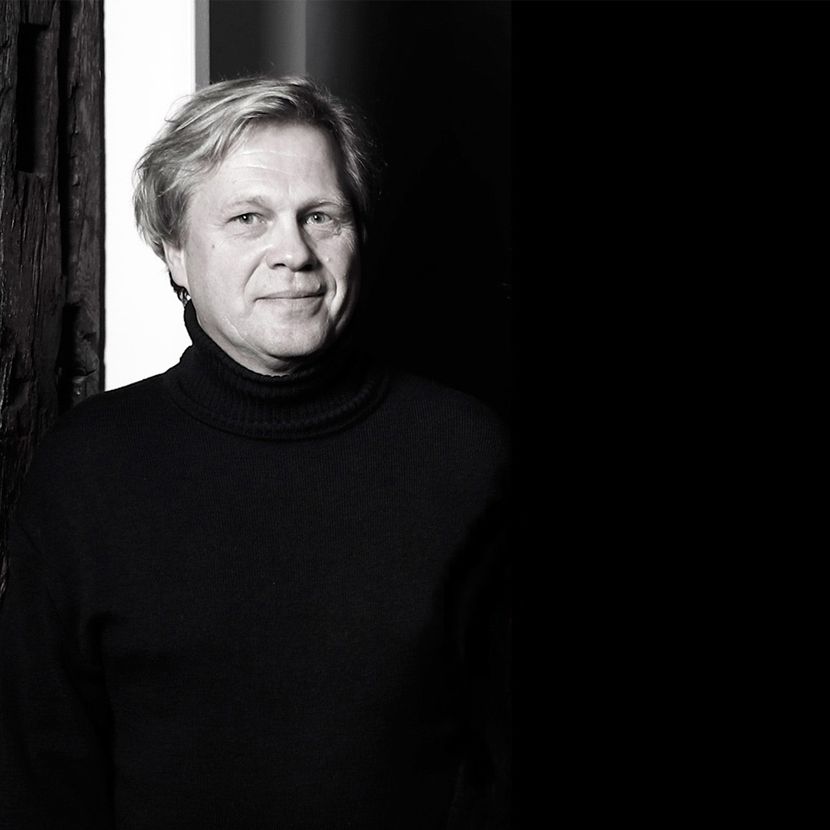
Andreas Ostwald
Andreas Ostwald (geb. in 1964) volgde voor zijn studie aan de Muthesius Hochschule in Kiel een opleiding tot beëdigd keramiek-ontwerper in de Porzellanfabrik Friesland.
Hier ontdekte hij zijn liefde voor het witte goud. Bij de vervaardiging van prototypes voor de porseleinproductie leer je hoe je met gips driedimensionale curves en sferische oppervlakken op de tiende millimeter nauwkeurig kunt beheersen.
Na zijn opleiding werkte hij als ontwerper voor diverse ontwerpbureaus en bedrijven.
Als professor gaf hij 10 jaar les in de methodiek van het designproces aan de Muthesius Hochschule in Kiel, voordat hij in 2006 naar de HFK Bremen overstapte en hier tot 2013 les gaf in geïntegreerd design.
Op het gebied van productontwerp is hij naast de ontwikkeling van zitmeubels met name geïnteresseerd in het ontwerp van lampen voor bekende nationale en internationale fabrikanten.
Hij was lid van de "Rat für Formgebung" en in deze functie ook jarenlang lid van talloze vakjury's. Zijn werk werd met talloze gerenommeerde prijzen onderscheiden.
Andreas Ostwald woont met zijn vrouw en drie dochters in Harvestehude.
 Zitmeubelen
Zitmeubelen Tafels
Tafels Kapstoken
Kapstoken Transportmiddelen
Transportmiddelen Restaureren
Restaureren Projecten
Projecten Stof
Stof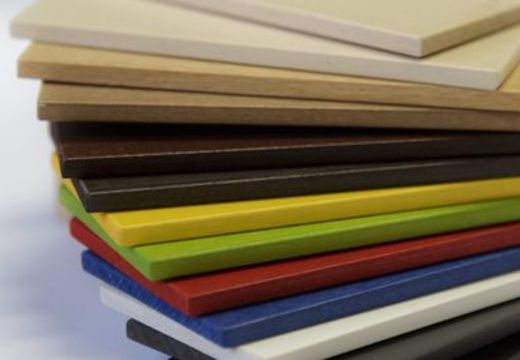 Beits- & Stahlkleuren
Beits- & Stahlkleuren CPL en kunststof zitschalen
CPL en kunststof zitschalen Tafelbladuit- voeringen
Tafelbladuit- voeringen



